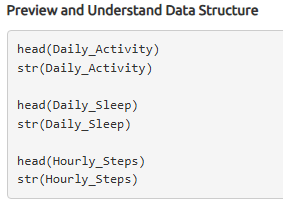Bellabeat Case Study: Insights into Wellness Technology
- Mukesh Shirke

- May 15
- 3 min read
Updated: May 26
An R-driven exploratory analysis of Bellabeat smart device data was conducted to uncover patterns in user activity, sleep, and health behaviors, aiming to inform product improvements and marketing strategies. By integrating and analyzing datasets on daily steps, sleep, and activity intensity in R Studio, the study identified key trends in user wellness habits that could guide Bellabeat’s growth opportunities.
Link to Bellabeat Case Study Dashboard:
GitHub Repository:
Snapshot:
Project Background and Overview
This repository presents an exploratory data analysis (EDA) of hospital emergency room (ER) visit data, using SQL for data cleaning, transformation, and insight generation. The project aims to uncover patterns in patient visits, wait times, and departmental referrals, providing a practical example of handling real-world, messy healthcare data. The analysis follows a structured data science workflow—Ask, Prepare, Process, Analyze, Share, and Act—demonstrating SQL skills in data wrangling and reporting. The project highlights the importance of data quality checks and transparent documentation in healthcare analytics.
Data Structure Overview
Data Source
The data for this analysis is the Fitbit Fitness Tracker Data stored on Kaggle and made available by Mobius. This data needed to transform and clean to be use for further analysis
Files Used:
• Hospital-ER.xlsx — Raw ER visit data
• Hospital_ER_EDA.sql — SQL script for data cleaning, transformation, and analysis
Data Preparation
• Removed duplicates and handled missing values
• Standardized date/time formats
• Addressed inconsistent or incomplete entries
• Filtered and joined data as needed for analysis
Data Limitations
• Contains missing and incomplete values in several fields
• No direct clinical outcome or diagnosis data
• Limited demographic and geographic detail
• Data is anonymized for privacy
Analysis Summary
This SQL-based analysis explores trends in ER wait times, patient demographics, and departmental referrals.
Key findings include:
• Wide variation in patient wait times, with some departments experiencing longer delays.
• Most ER visits are not followed by a departmental referral.
• Patient demographics (age, gender, race) are diverse, with no single group dominating the dataset.
Insights Deep Dive
1. Wait Time Analysis
• Quantified Value: Average ER wait time and distribution across all visits
• Story: Identifies periods or departments with longer wait times, highlighting potential areas for process improvement.
2. Admission Patterns
• Quantified Value: Percentage of patients admitted vs. discharged
• Story: Reveals trends in ER utilization and admission rates.
3. Departmental Referrals
• Quantified Value: Top referral departments and their associated wait times
• Story: Shows which specialties receive the most ER referrals and how this affects patient flow.
Recommendations
• Investigate causes of long wait times in specific departments.
• Consider targeted interventions for patient groups with consistently longer waits.
• Enhance data collection for more detailed analysis (e.g., outcomes, reasons for visit).
How to Use
1. View the Analysis:
• Open the Hospital_ER_EDA.sql file in your SQL editor to review the full workflow, including data cleaning, analysis, and summary queries.
2. Run the Analysis:
• Import the Hospital-ER.xlsx data into your SQL environment.
• Execute the SQL script to reproduce the results and explore the dataset further.
3. Modify for New Insights:
• Adjust queries or add new ones to investigate additional questions or trends.
Author
Mukesh Shirke
Explore the SQL script for detailed code, data cleaning steps, and the full analysis process. This project demonstrates practical SQL skills and the application of data-driven insights to real-world healthcare operations.
















Comments